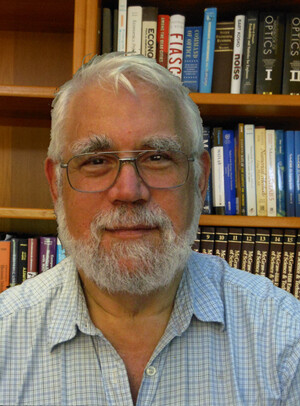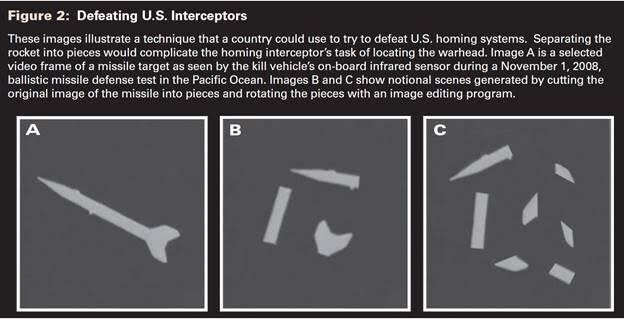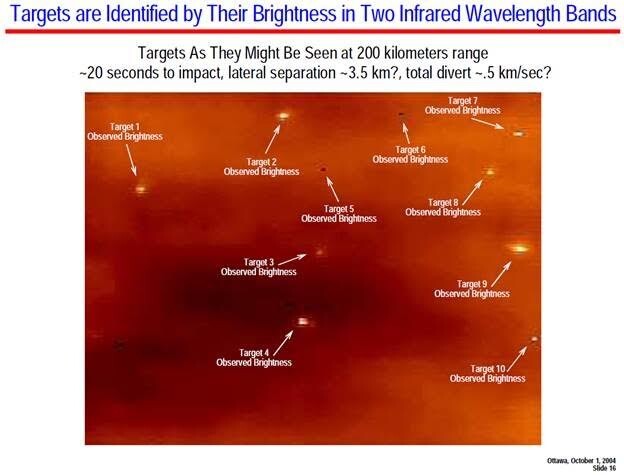hankyoreh
Links to other country sites 다른 나라 사이트 링크
[Interview] Missile defense systems expert says THAAD could prove useless

A expert in missile defense systems said the propellant explosion technology seen in North Korea’s recent long-range rocket launch on Feb. 7 could render useless the Terminal High Altitude Area Defense (THAAD) system South Korea and the US have all but officially decided to deploy on the Korean Peninsula.
Massachusetts Institute of Technology (MIT) emeritus professor Theodore Postol explained the situation in a series of email and telephone interviews with the Hankyoreh in the wake of the launch and the announcement that South Korea and the US have begun official discussions on THAAD deployment.
Postol, who earned a doctorate in physics from MIT and previously served as senior adviser to the US chief of naval operations, is a noted expert in missile defense systems who has explored the area for over 30 years academically and for the US Department of Defense, Argonne National Laboratory, and Congress.
One point Postol particularly noted about North Korea’s recent launch was the first stage’s explosion and separation into hundreds of scattered fragments. Indeed, the South Korean Ministry of National Defense noted on Feb. 9 that Aegis radar showed tracks from some 270 exploded fragments from the first stage.
“The explosion is believed to have been carried out through a self-destruct mechanism to prevent South Korea from collecting the propellant,” the ministry said at the time.

Postol said use of the same self-destruct technology with North Korea’s Nodong missile would prevent THAAD radar from identifying an actual warhead. At the moment THAAD launches an interception missile, North Korea could explode its own warhead-carrying missile into multiple fragments.
“Once the rocket completes its powered flight, it is at very high altitude where for all practical purposes there is no air-drag to slow up light objects relative to heavy objects,” Postol observed.
“Thus, if a missile is cut into many pieces after it has completed its powered flight, all of the pieces will float along with its warhead payload on the same general trajectory,” he continued.
“Cutting the missile into many pieces simply makes it possible for an adversary to create many false targets that a distant infrared homing interceptor would not be able to see in any detail.”
In short, an interception missile would be rendered useless because of the large number of more or less identical targets.

“All the interceptor sees are unresolved points of light, any one of which could be the warhead,” Postol explained.
In particular, he noted that “[objects that are elongated and tumbling . . . will appear to change their brightness when they rotate from orientations that present a large projected area to the interceptor relative to orientations that present a small projected area.”
“However, this information is not useful to the sensor because any of the objects, including the warhead, could be tumbling,” he concluded.
Postol went on to note that “this technology could be applied to a North Korean Nodong ballistic missile carrying a nuclear warhead aimed at South Korea.”
Postol was also highly critical of Seoul and Washington’s public claims that THAAD would not pose a threat to China.
“To suggest that the THAAD radar is not capable of the FB [forward-based] mode is the same as suggesting that a tank that can travel 100 km to a destination and then return from that destination . . . is not capable of traveling 200 km to a more distant location,” he said in response to the argument that THAAD radar on the Korean Peninsula could not be used in FB mode.
“It is the right of the South Korean government and people to choose to deploy THAAD in spite of this technical situation, but they should not take this action under the mistaken belief that China will not correctly assess the THAAD radar as a potential danger to its nuclear deterrent forces,” he added.
In closing, Postol noted that he has “extensive experience with general officers at the levels” of USFK Commanding General Eighth Army Maj. Gen. Thomas Vandal and USFK Commander General Curtis Scaparrotti.
“It is very disturbing for me as an American citizen to see two senior US general officers improperly attempting to interfere with the domestic political decision-making in South Korea by stoking unfounded fears about long-range rockets and nuclear weapons developments,” he said.
By Yi Yong-in, Washington correspondent
Please direct questions or comments to [english@hani.co.kr]

Editorial・opinion
![[Column] Season 2 of special prosecutor probe may be coming to Korea soon [Column] Season 2 of special prosecutor probe may be coming to Korea soon](https://flexible.img.hani.co.kr/flexible/normal/500/300/imgdb/original/2024/0426/3317141030699447.jpg) [Column] Season 2 of special prosecutor probe may be coming to Korea soon
[Column] Season 2 of special prosecutor probe may be coming to Korea soon![[Column] Park Geun-hye déjà vu in Yoon Suk-yeol [Column] Park Geun-hye déjà vu in Yoon Suk-yeol](https://flexible.img.hani.co.kr/flexible/normal/500/300/imgdb/original/2024/0424/651713945113788.jpg) [Column] Park Geun-hye déjà vu in Yoon Suk-yeol
[Column] Park Geun-hye déjà vu in Yoon Suk-yeol- [Editorial] New weight of N. Korea’s nuclear threats makes dialogue all the more urgent
- [Guest essay] The real reason Korea’s new right wants to dub Rhee a founding father
- [Column] ‘Choson’: Is it time we start referring to N. Korea in its own terms?
- [Editorial] Japan’s rewriting of history with Korea has gone too far
- [Column] The president’s questionable capacity for dialogue
- [Column] Are chaebol firms just pizza pies for families to divvy up as they please?
- [Column] Has Korea, too, crossed the Rubicon on China?
- [Correspondent’s column] In Japan’s alliance with US, echoes of its past alliances with UK
Most viewed articles
- 1[Column] Season 2 of special prosecutor probe may be coming to Korea soon
- 2‘We must say no’: Seoul defense chief on Korean, USFK involvement in hypothetical Taiwan crisis
- 3N. Korean delegation’s trip to Iran shows how Pyongyang is leveraging ties with Moscow
- 4Amnesty notes ‘erosion’ of freedom of expression in Korea in annual human rights report
- 5[Editorial] Korea’s surprise Q1 growth requires objective assessment, not blind fanfare
- 6Division commander ordered troops to enter raging flood waters before Marine died, survivor says
- 7[Reportage] On US campuses, student risk arrest as they call for divestment from Israel
- 8Korea sees more deaths than births for 52nd consecutive month in February
- 9Is N. Korea threatening to test nukes in response to possible new US-led sanctions body?
- 10Is Japan about to snatch control of Line messenger from Korea’s Naver?